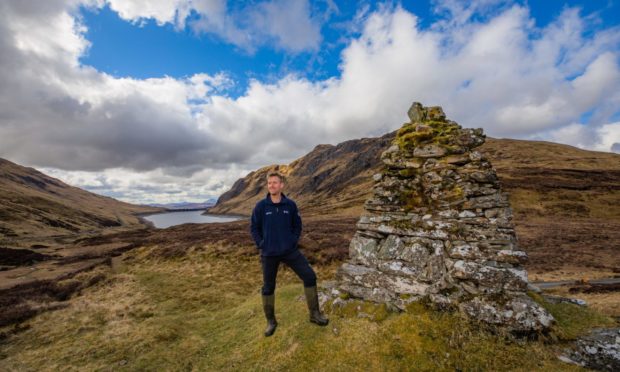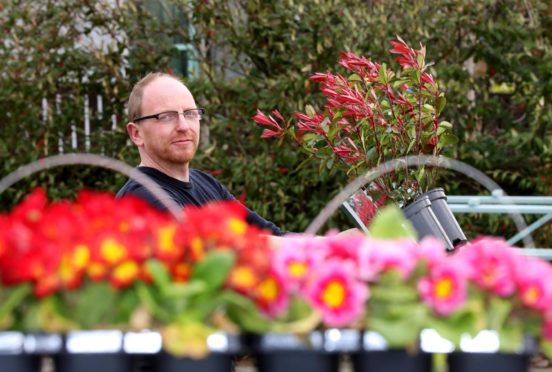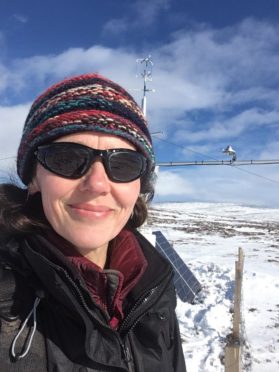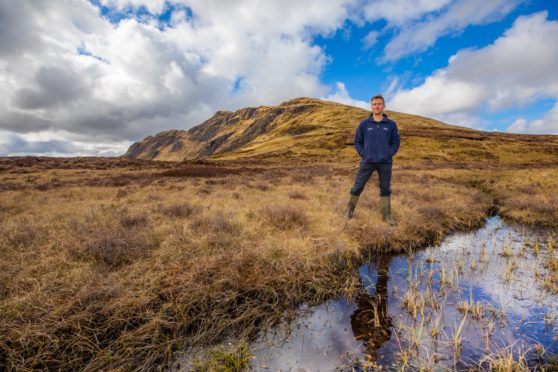Compost-based peat should be banned to help Scotland’s climate, campaigners have said.
Restoring peatlands, found locally in Perthshire, Angus and some parts of Fife, is an important step towards cutting carbon emissions and meeting climate change goals.
But peat is still used in many forms of commercial compost, leading to calls for local gardeners and retailers to find an alternative.
Demand for peat in compost growing
Andrew Llanwarne is a Friends of the Earth Tayside co-ordinator.
He said it was “disappointing” that big-chain garden centres still sell peat-based products.
“The loss of peatland is a major contributor to our carbon emissions.”
He said “statutory targets” should be set to give retailers a deadline to phase out its sale.
However, a rise in demand — as reported by the BBC — has been putting retailers in a bind.
Dobbies has committed to stocking peat-free compost by next year — and currently sell peat-free alternatives at an “equivalent” price to peat products.
B&Q has not set a date, but claim they are “moving away from peat in our products”.
Ross Turriff, of Turriff’s Garden Centre and Farm Shop in Broughty Ferry, has noticed gardeners become conscious of the issue in recent years.
He said: “It’s been bubbling about for a few years for us. We’ve been asked for alternatives to peat a fair bit.
“There are some hardcore gardeners who specifically want compost with peat in it, however. For all the environmental issues, they think it has better results or it’s what they are used to using.
“But generally folk are more mindful of it and looking for alternatives. They do tend to be more expensive though, so that is an issue.”
Linda Adams, secretary from Stirling Park Allotments, near the Law in Dundee, suggests gardeners should make their own.
“Whenever someone new takes on an allotment here, I tell them they should make their own compost.
“It’s good to be recycling things and saves food and garden waste going into landfill.”
Why is peatland important?
Scotland is among the most peat-rich countries in Europe.
A healthy peatland can act as a carbon “sink” — storing the greenhouse gas.
However, when it degrades or is extracted, vast swathes of carbon can be released into the atmosphere.
A combination of restoration work and ending extraction are the best methods to stop peatland carbon emissions rising.
Dr Rebekka Artz, researcher in ecological sciences at the James Hutton, Institute said degraded peatlands lose more carbon emissions per hectare than intact ones store.
“So the overall balance is net loss of our precious peatland carbon stock. We have a real battle to restore such large areas of land.”
While peat’s use in commercial compost is not as big a carbon issue as natural degradation, Dr Artz notes that even its use in small pot plants may have a surprising effect.
“If you go into a garden centre and you buy a little plug plant, say, for begonias for your garden, the amount of carbon lost in the peat underneath the plant is several times higher than the carbon the plant will produce in biomass as it grows. In carbon terms, this is a very bad deal.”
Saving Perthshire peatlands
Recent James Hutton Institute findings indicate improved management of peatlands could cut global carbon emissions by about 500 million tonnes a year.
Ecologist Dan Watson oversees peatland restoration work across the country for the National Trust for Scotland.
Among the sites he oversees is the Ben Lawers National Nature Reserve, in Perthshire near Loch Tay.
It really is this magical land when it’s healthy.”
Dan Watson
Dan said: “In the past bogs were regarded as worthless. Now that we know how valuable they are, we have to reverse this damage.
“You can almost tell the state of the land just by actually seeing the peat itself. If you can see it through the vegetation, it’s dried.
“When the peat starts to dry and erode, it releases carbon that has been stored for thousands of years.”
Dan likens restoring peatland, and his work on carbon emissions, to creating a car that “sucks carbon out of the atmosphere”.
“It really is this magical land in that when it is healthy, it safely stores large quantities of carbon, thereby helping the environment.”













